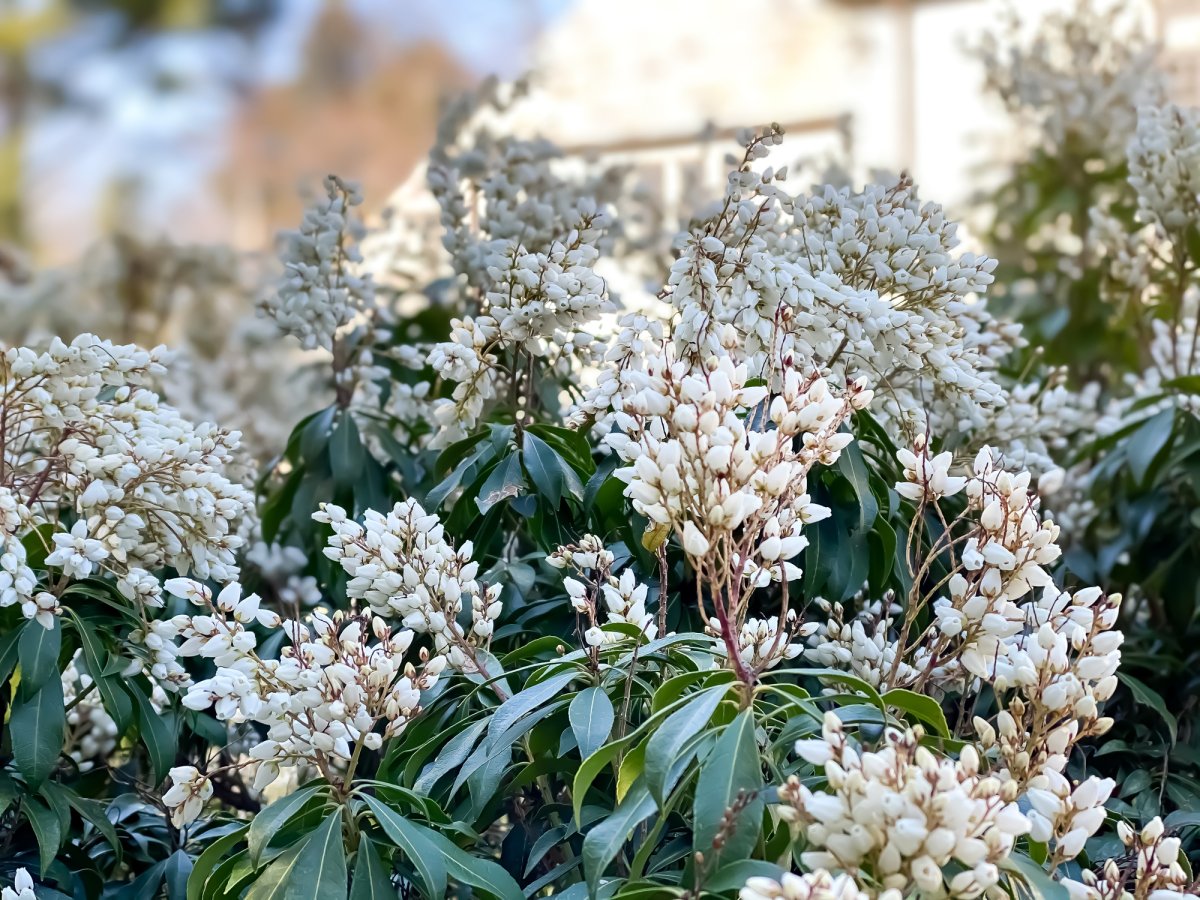

We may earn revenue from the products available on this page and participate in affiliate programs. Learn More ›
Most gardeners enjoy tending to the beauties sprouting in their yard, but what happens when these plants end up being more trouble than they are worth?
Perennial plants, often touted as the crux of a low-maintenance landscape, promise years of blooms with minimal effort. However, not all perennials live up to this ideal. Some can be surprisingly temperamental, requiring certain soil, sunlight, and wind conditions; growing out of control; or being vulnerable to pests, prone to disease, or even toxic to people and pets. While their lush blooms or unique foliage might tempt you to grow them, these finicky plants can turn your garden into a constant battle rather than a peaceful retreat.
Fortunately, there are hardier, more reliable alternatives to temperamental plants that offer similar visual appeal without the ongoing headaches. In this article, we’ll explore five perennials to avoid and what to plant instead for a thriving, stress-free landscape.
1. Instead of Japanese Maple (Acer palmatum): Serviceberry (Amelanchier)

The Japanese maple features a “latticed” shape and elegant foliage colors, but won’t suit every garden, says Julia Omelchenko, resident botany expert at Plantum, an app that helps gardeners identify plants and improve plant care. This picky plant prefers light and acidic soil, doesn’t stand strong winds, and requires partial shade in hot climates. “Full-day sun or drying winds can scorch its leaves, and the plant is susceptible to Verticillium wilt,” says Omelchenko.
She recommends replacing the Japanese maple with the serviceberry, also known as the juneberry, saskatoon, shadblow, shadbush, or sugarplum. This more adaptable choice is a shrub or small tree that thrives in both full sun and partial shade and tolerates a wider range of soil conditions. “It offers year-round appeal: delicate white flowers in early spring, edible blue-purple berries in summer, and vibrant orange-red foliage in fall,” says Omelchenko. In addition, this species is mostly resistant to pests and diseases and requires moderate watering once established. Prune the plant occasionally to shape the crown.
Preferred Plant: Serviceberry (Amelanchier)
Best For: Adding year-round interest to yards that receive full sun to partial shade, given its spring flowers, edible summer berries, and vibrant fall foliage.
USDA Hardiness Zones: 4 to 9
2. Instead of Candle Larkspur (Delphinium elatum): Woodland Sage (Salvia nemorosa)

Candle larkspur, also referred to as delphinium, is admired for its tall flower spikes in shades of white, blue, and purple, but it comes with specific growing requirements that can be difficult to meet. “The plant is prone to wind damage; struggles in hot summers; requires fertile, moisture-retentive soil; and is vulnerable to slugs, crown rot, and powdery mildew,” notes Omelchenko.
She recommends woodland sage, a much more resilient plant. It looks similar, with tall purple flowers. This plant adds a vertical accent to the garden but with sturdier stems than the candle larkspur. “You can extend its blooming period, which usually lasts from May to July, by promptly removing spent flowers,” advises Omelchenko. “Once established, the woodland sage tolerates winter frost, drought, and summer heat, making it ideal for regions with rainy, windy weather or gardens affected by slug infestations.”
Preferred Plant: Woodland sage (Salvia nemorosa)
Best For: Attracting pollinators and adding long-lasting color to sunny garden beds with its vibrant, spiky blooms and aromatic foliage.
USDA Hardiness Zones: 4 to 8
3. Instead of Lily-of-the-Valley (Convallaria majalis): Foamflower (Tiarella cordifolia)

Mimicking a lily, this plant with fragrant white bell-like flowers is actually part of the asparagus family. Lily-of-the-valley is highly toxic if ingested and it tends to grow aggressively in shady spots. When it grows too wildly, it is difficult to control and can kill nearby plants, so it’s a plant best avoided in your yard.
A smart alternative is foamflower, which also grows well in shade. Although it isn’t fragrant, it looks similar to lily-of-the-valley but won’t take over the garden. Foamflower prefers soil that is moist and well-draining but not soggy, and can withstand a short drought. These flowers bloom in May and June, but some can bloom earlier and last until summer. Without its blooms, foamflower still is an attractive plant all year long, given its semi-glossy leaves that can display reddish variegations.
Preferred Plant: Foamflower (Tiarella cordifolia)
Best For: Brightening shady areas with its delicate blooms and heart-shaped foliage that provides ground cover.
USDA Hardiness Zones: 3 to 8
4. Instead of Rhododendron (Rhododendron): Oakleaf Hydrangea (Hydrangea quercifolia)

Rhododendron, also referred to as azalea or rosebay, is a striking centerpiece in any garden thanks to its vivid blooms in a range of colors including pink and purple. However, it requires acidic soil (pH less than 6.0) that is constantly moist yet drains well, and cool temperatures, says Omelchenko.
If these conditions are difficult to maintain, she recommends gardeners swap rhododendron for oakleaf hydrangea. “This plant tolerates a broader soil pH range (5.5 to 7.0) and, unlike many other hydrangeas, can endure drought,” says Omelchenko. “This plant produces large, cone-shaped inflorescences from May to July. Even after flowering, its foliage turns vibrant shades of burgundy and scarlet, providing fall interest in the garden.”
Preferred Plant: Oakleaf hydrangea (Hydrangea quercifolia)
Best For: Creating a striking focal point in the garden with its large, cone-shaped flowers in areas that may experience drought conditions.
USDA Hardiness Zones: 5 to 9
5. Instead of Hybrid Tea Rose (Rosa x hybrida): Wild or Japanese Rose (Rosa Rugosa)

Hybrid tea roses, a cross between hybrid perpetual roses and old-fashioned tea roses, are gorgeous with their large, colorful, high buds and tall, straight stems. However, they are susceptible to diseases like botrytis blight, black spot disease, and crown gall; can attract pests like spider mites and Japanese beetles; and can experience issues related to fungus like discoloration and holes in the leaves. As Omelchenko points out, “Roses are stunningly beautiful and popular plants, but growing them can be challenging even for experienced gardeners.”
A hardier alternative is Rosa rugosa, known as a shrub rose, wild rose, or Japanese rose. “This species tolerates wind, salt spray, and sandy or poor soils, and it can survive winters in USDA Zone 2 without extra protection.” The shrub produces fragrant, 5-petaled (sometimes velvet-textured) flowers from May to June. “After blooming, it produces abundant red fruit rich in vitamin C, adding visual interest to the garden and providing a nutritious food source for birds in winter.”
Preferred Plant: Wild rose (Rosa Rugosa)
Best For: Offering fragrant blooms, hardy growth, and attractive rose hips that support wildlife in coastal and low-maintenance landscapes.
USDA Hardiness Zones: 2 to 7
